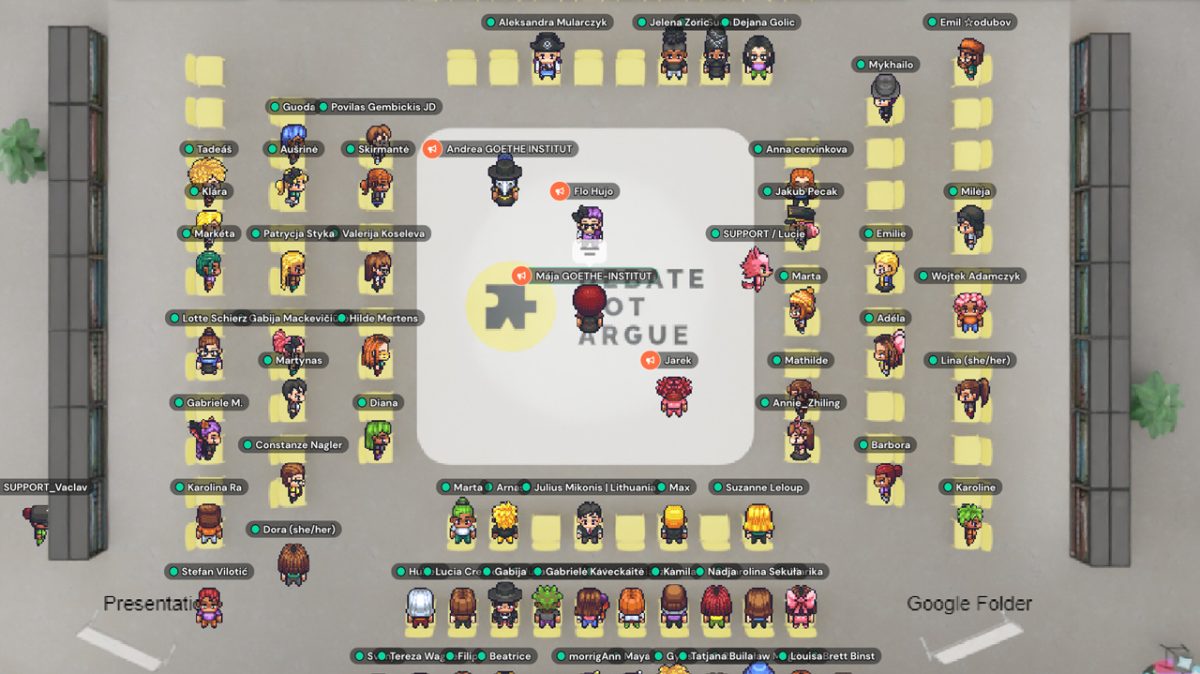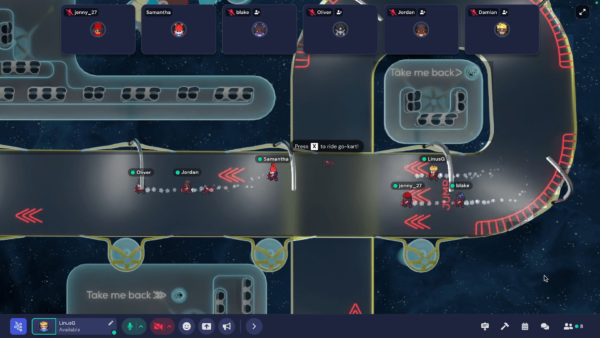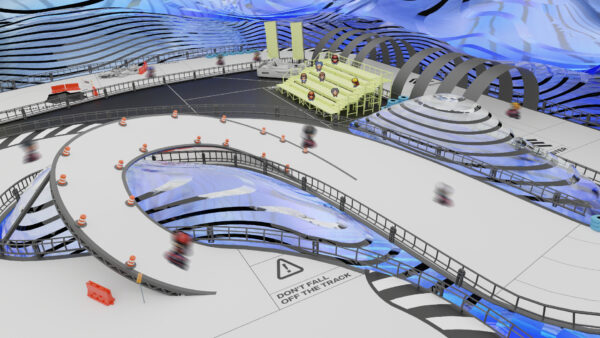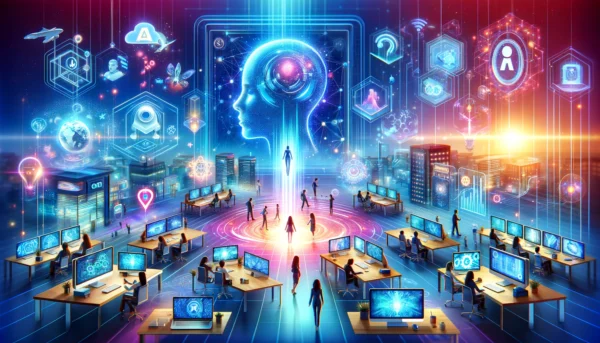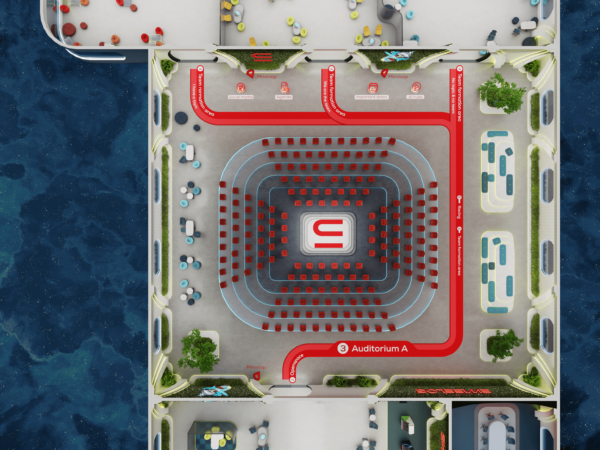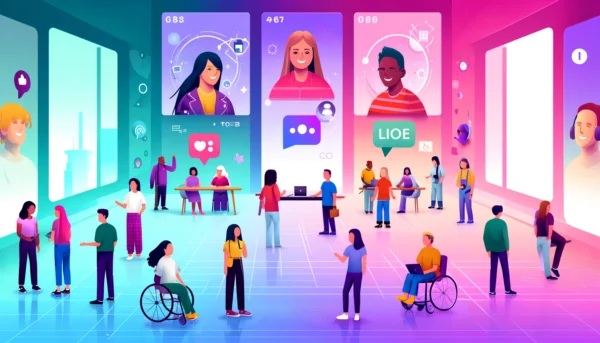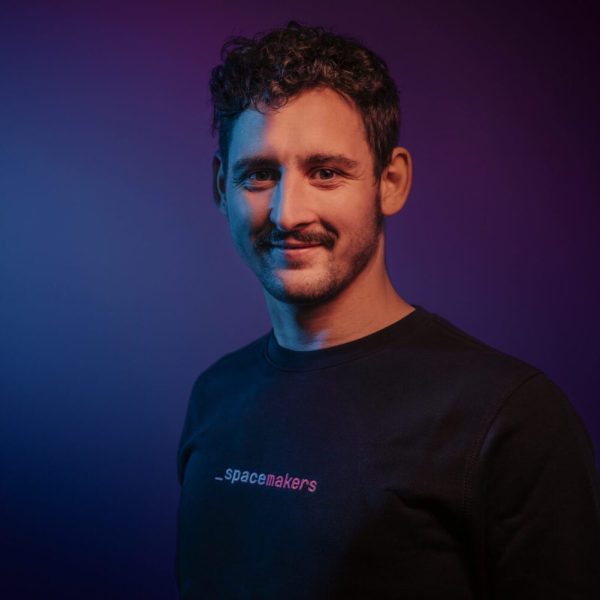How do online events in education work nowadays and how do you push them to gain a competitive edge? In the field of international education, we helped Goethe Institute to build an online world Palace of Literates to host regular educational workshops for young people. More than 70 people from 7 different countries could connect on a regular basis through a program that started in September 2022 and is ongoing. In the sessions, they have been encouraged to learn about and discuss delicate topics like media literacy, fake news and related topics such as minorities, LGBTQ+ and feminism.
The premise for this was to create a welcoming and friendly atmosphere, where participants can open-up easily even in an online environment, and they can “Debate, not argue”, as the motto of the project says. Read an interview with coordinator of the project, Andrea Bodnarova from Goethe Institut, about the perks and pitfalls of using an online world on the Gather platform, crafted by Space Makers.

What was the main reason and motivation behind creating the online meeting environment, Palace of Literates?
Experiences during the COVID period showed us that if we want to truly engage and motivate young people in an online environment, we need to come up with something more interesting and interactive than a regular video call. We wanted to create a space that would resemble the real world, where interactions with participants would feel more natural. We also wanted to try something new and explore the possibilities of online platforms.
How did the participants react to the online environment and the event on Gather?
Participants intuitively understood everything from the beginning, and we didn’t need to explain anything complex to them. Essentially, if you imagine how people would behave in such a place if it were real, participants naturally form groups, sit at tables, and chat. Participants enjoyed dancing and throwing confetti (using the F and Y keys), which helped initiate their engagement. On the other hand, a significant portion of them preferred to sit alone with their cameras off and simply “consume” the workshop without actively interacting.
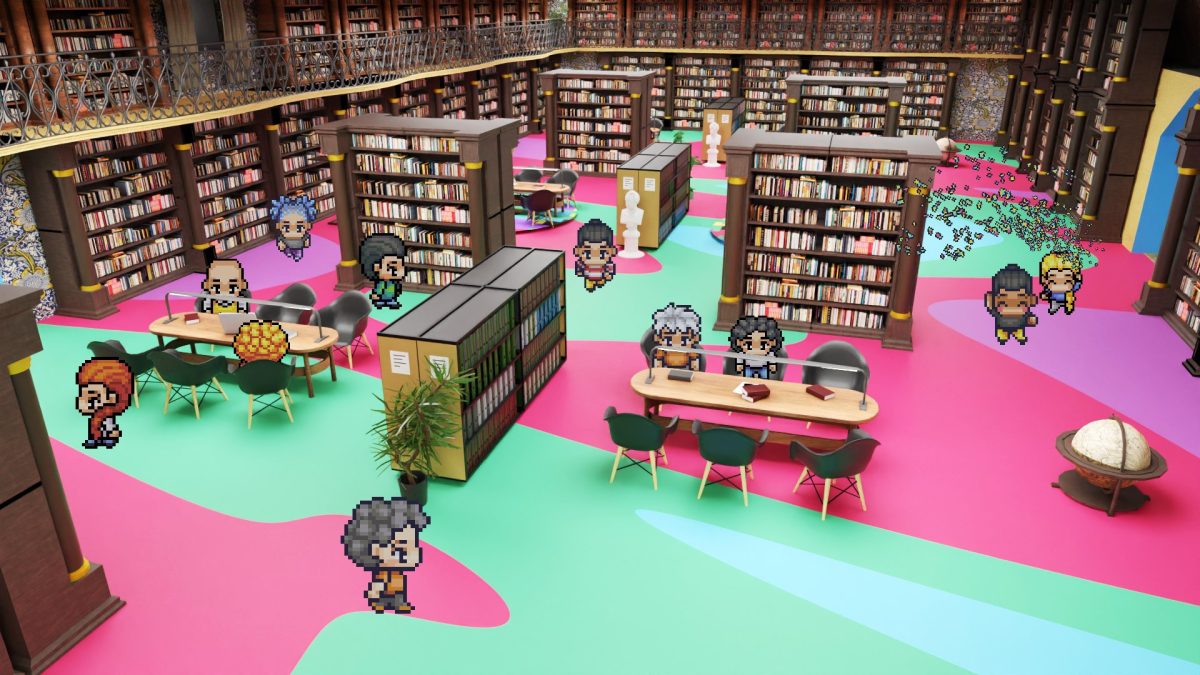
What advice would you give to others planning a similar event?
Our advice would be “Act as if you were offline, but keep in mind that you are online.” We try to create the impression that we are together in a real room, but at the same time, we must always remember the limitations of the online world and not exceed them during the event.
Specifically:
- The Announcement options in Gather have several options, so a message like “let’s meet again at 7:30 PM,”can be delivered via the feature Announcements, but participants often prefer opening the Chat, which they are more used to.
- Navigation – some people have more difficulty orienting themselves in a virtual building, which likely relates to their limited experience with playing computer games So it is important to keep in mind that some people will onboard more easily than others.
- Interaction – we try to simulate offline environments by “calling on” (so called Spotlighting in Gather) and encouraging people to come to the stage, but many people still interact through written communication in the chat.
So, even though all participants are briefed well about the communication tools and how to use them, it is important to be flexible and respect their choice of using them. If someone doesn’t want to talk out loud on a microphone and a camera and only texts, that’s OK and we respect that. And actually that’s a true inclusive approach, which online enables.

Was there anything you would’ve liked to have known before starting?
When simulating a physical interactive environment like Gather, it is good to consider that many people will continue to interact as they do in a regular virtual environment, like on Zoom or Teams, despite other options. It’s also important to note that although Gather as a platform is very undemanding in terms of internet speed and hardware, there are still people who can encounter issues with their microphone, graphics card, browser, which affects the smoothness of the workshop. What usually prevents and fixes the problems is use of a recommended browser (Chrome over Safari).
Did you have preconceived notions about online solutions?
Initially, we were concerned that the visual style of Gather might look too childish, based on the default pre-designed environments by Gather we initially tried. This concern was resolved when we saw the previous work of Space Makers and realized that in 3D design, the space could look more serious and mature. We also had concerns about technical issues associated with navigating in a new interface, but so far, we haven’t encountered such problems. And, our colleagues quickly learned to work with the environment.
What is the typical standard for online events in the international education industry?
Other organizations also utilize various forms of online meetings because achieving results solely through in-person gatherings is often not feasible. However, the most common form of online meetings still revolves around Zoom, Teams, and others. This is likely due to concerns that participants may not be interested in learning to use a new platform and that such solutions can still be relatively expensive. But it is evident that participants enjoy the custom designed online space.
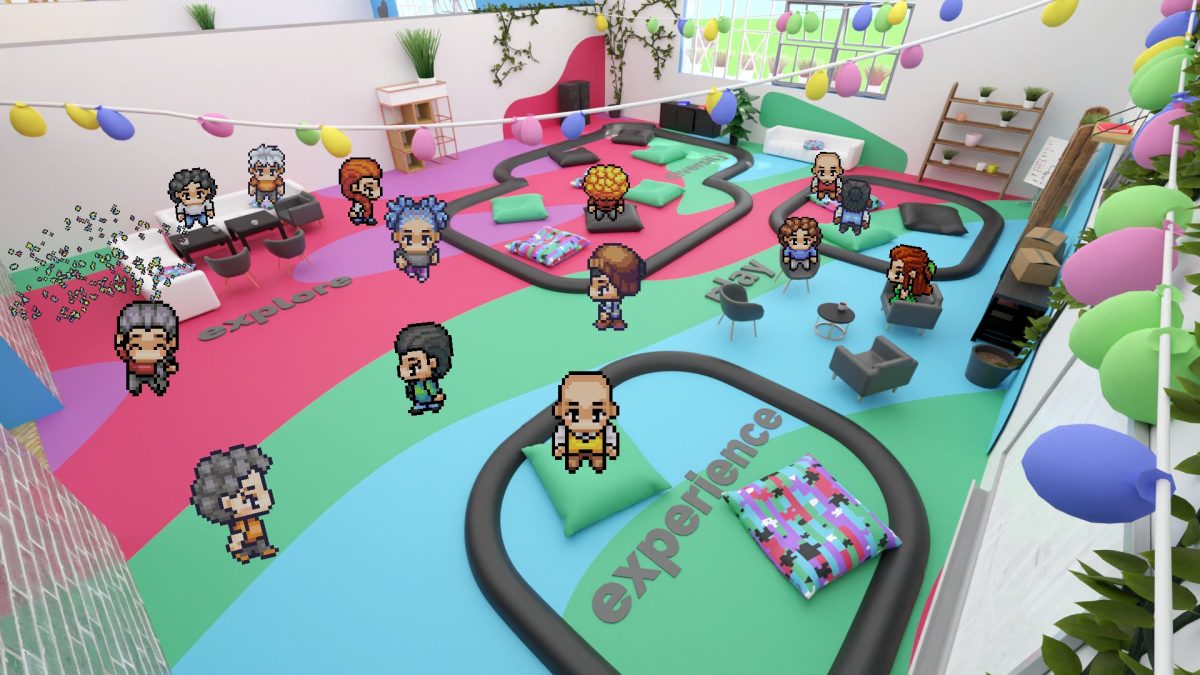
Did this solution give you any competitive advantage?
Determining this would be a complex assessment which we probably can evaluate after a longer time-period, but we believe it is something we can continue to leverage in the future. And we are currently considering how our existing Gather space could be integrated into the next project. The platform definitely has a lot of creative potential, people just take longer to get used to new things.
What specific advantages do you see in this solution compared to traditional online meeting forms (Teams, Zoom, etc.)?
Working in groups is much easier and more intuitive. When participants divide into groups, you can still see them around you; they are not “hidden” like in breakout rooms. When the “teacher” wants to observe a group’s work, participants see them approaching, and it’s less stressful for them than if they suddenly appeared. It’s also useful that a speech bubble appears above the person speaking so that the workshop leader can easily identify which group is discussing and which one is silent. Moreover, the space itself influences how participants perceive and engage with what is happening. Workshop rooms with shared boards encourage collaboration, while in an auditorium, it’s clear that everyone should listen, and the person in the center is the one speaking. In Zoom or Teams, all of this needs to be communicated more explicitly, making it less intuitive. Personally, when I need to work on something or learn, changing my environment helps me. In everyday life, I go to the garden or a café, but in online events, I miss that option. In Gather, I can at least partially recreate that experience as I’m used to. Moving to a different location wakes me up. It’s great how much you can incorporate project branding into Gather—not just the logo but also colors and themes. You can create a certain atmosphere simply through the appearance of the place, which is nearly impossible in video calls, so organizers have more work to do to create a pleasant atmosphere.
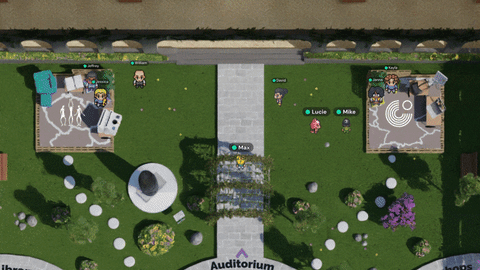
The main topics of your event were equality, minorities in society and inclusivity. How do you assess the impact of the room design and the platform features on participants’ willingness to share more about these topics and open up to other participants?
In Gather, we conduct the online part of our program for participants, where we don’t delve too deep; rather, we try to prepare them for the debates they will have when they meet in person. So, we can’t say much about this aspect yet. Generally, I think that participants’ willingness to open up and engage in discussions is usually greater in Gather than in regular video calls, but still significantly less than in face-to-face meetings. In any case, we believe that thanks to the introductory workshops we have conducted for our participants, people were less hesitant to speak with individuals from other countries and mix with different groups, which can sometimes be a challenge during in-person workshops.
Ready to take your online education to the next level? Space Makers specializes in tailor-made online worlds and virtual experiences. Whether you want to connect diverse communities, do workshops and lectures over distance, or simply leave an impression, we’ve got you covered. Get in touch with Space Makers on LinkedIn or just shoot a message to Vaclav Zamrazil to craft a functional, yet extraordinary online space with us.
